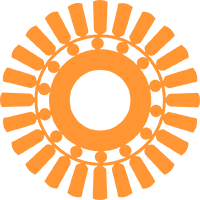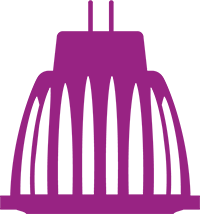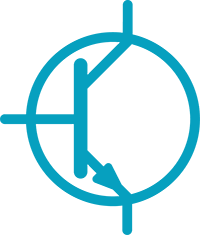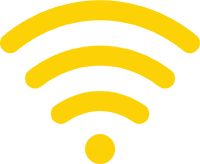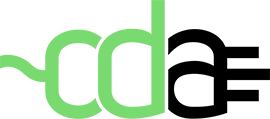Today, the Smart Sustainability in Lighting and Controls (SSLC) Platform published a comprehensive review of the scientific knowledge acquired over the last ten years on the effects of solid state lighting (SSL) on human health. The report considers issues that concern both large fractions of the population as well as small sensitive groups of people. The report is primarily intended to support policymakers, offering guidance on lighting and health, as they consider product regulatory requirements, procurement specifications, programmes to raise public awareness, and other initiatives. However, the report will also be useful to the entire lighting community, including scientists engaged in fundamental and applied lighting research, illumination engineers, manufacturers, and lighting practitioners.
The International Energy Agency’s (IEA) Energy Efficient End-Use Equipment (4E) Platform on Smart Sustainability in Lighting and Controls (SSLC Platform) is today issuing a report that represents a synthesis of health and lighting studies published over the last decade. The effects of lighting on health are technology agnostic, however advances in physiology and medicine have contributed to new awareness and understanding of the impacts of light on human health. This study examines some features of SSL products that may pose a risk and which could be improved or applied differently to achieve better outcomes in terms of health and well-being.
The report covers both acute effects (effects that develop during or immediately following an exposure) of optical radiation on the eye and the skin, discomfort glare, circadian disruptions, neuro-behavioural effects, and temporal light modulation (TLM), as well as long-term effects (effects that build over months or years) including age-related macular degeneration, myopia and cancer risk.
Click here to download the report, Solid State Lighting: Review of Health Effects
“Over the last five years, the SSLC Platform researchers have been conducting a detailed study of the published research on solid-state lighting and human health” said Professor Georges Zissis, Chair of the SSLC Platform’s Management Committee and representative of the French government, one of the SSLC Platform’s member countries. “The study evaluated photobiological safety, glare, temporal light modulation, and circadian, acute neuro-behavioural & long-term effects of light. It provides a detailed review of the knowledge in these important areas and gives decision makers robust information that they can apply to their lighting policy initiatives.”
One of the key health-related topics of interest with lighting is temporal light modulation (TLM), more commonly known as “flicker”. Dr. Jennifer Veitch from the National Research Council of Canada and one of the report’s lead authors noted, “There is ample evidence that TLM affects human physiology and behaviour, with implications for health and well-being. TLM is detrimental to lighting quality and to health, disrupting brain activity and eye movements, and affecting cognitive performance. It can cause eyestrain, headache, fatigue, and other symptoms, particularly over longer periods. These effects can be debilitating to the fraction of the population showing a higher sensitivity to TLM and degrade lighting quality for everyone.”
Another key topic, discomfort glare, is something that everyone is familiar with, irrespective of the lighting technology. In fact, it is one of the most common causes of complaints about lighting. Dr. Christophe Martinsons of the Centre Scientifique et Technique du Bâtiment (CSTB), Grenoble, France and the report’s other lead author and coordinator noted that “due to the small size and the high intensity of LEDs, some SSL products may produce high luminance levels or high luminance contrasts with their environments, causing discomfort glare in some viewing conditions.” He continued, “in order to protect sensitive population groups, such as children, from the effects of glare, future lighting standards should look carefully at not only the non-uniformity of SSL lighting sources, but also the spectral distribution of the light itself.”
Light exposure triggers a wide variety of physiological and psychological effects on people, but it is important to note that solid state lighting (i.e., LED-based technology) does not have more direct negative impacts on human health than the traditional light sources. People and other organisms perceive electric lighting in a technology agnostic way, meaning the effects occur for any light source, although with greater or lesser probability and intensity depending on the characteristics of the light source.
Solid state lighting (SSL) has a major benefit for humanity in that it consumes less energy than the legacy light sources it replaces. Looking at the technology as a product class (within which there are better and worse individual products), SSL overall does not pose new health risks to the general population. However, there is a risk that sensitive individuals could be exposed to adverse effects unexpectedly, and regulations could better protect these individuals either by eliminating these conditions (e.g., setting limit values) or through mandatory reporting and labelling.
Most energy regulations focus on reducing energy used for lighting, with the result being a tendency to reduce light levels that can conflict with the growing knowledge about daily light and dark exposure. Resolving this dilemma and setting appropriate regulations to ensure the public has access to the best quality lighting will require collaboration between government departments of energy, environment and health, regulatory agencies that might not have previously collaborated on lighting.
[ENDS]
Webinar Series on the report:
To communicate the broad set of findings from “Solid State Lighting: Review of Health Effects”, the IEA 4E SSLC Platform is convening a series of webinars in two different time zones. The findings of the report have been divided up between three one-hour webinars which will each be presented twice, once for the Australia/Asia time zones and once for the America/Europe time zones. Please register to attend the webinar series by clicking on the links below. After the webinars, we will post the slides and recordings.
- 19 November 2024 – Temporal Light Modulation: Australia/Asia time zone – America/Europe time zone
- 20 November 2024 – Circadian, Acute Neuro-Behavioural & Long-Term Effects: Australia/Asia time zone – America/Europe time zone
- 21 November 2024 – Photobiological Safety & Glare: Australia/Asia time zone – America/Europe time zone
About the IEA 4E Smart Sustainability in Lighting and Controls (SSLC) Platform
The IEA 4E Solid State Lighting (SSL) Annex was established in 2010 under the framework of the International Energy Agency’s Energy Efficient End-use Equipment (4E) Implementing Agreement. Its purpose has been to provide advice to its member countries seeking to promote energy efficient lighting and to implement quality assurance programmes for SSL lighting. In 2024, the SSL Annex renamed itself Smart Sustainability in Lighting and Controls (SSLC) Platform. Member countries and economies participating directly in the work of the SSLC Platform include Australia, Denmark, the European Commission, France, the Republic of Korea, Sweden and the United Kingdom. Information on the IEA 4E SSLC Platform is available from: https://www.iea-4e.org/ssl/
About the International Energy Agency’s Technology Collaboration Programme on Energy Efficient End-Use Equipment (4E)
The European Commission and fourteen countries from Asia-Pacific, Europe and North America have joined together under the forum of 4E to share information and transfer experience in order to support good policy development in the field of energy efficient appliances and equipment. 4E focuses on appliances and equipment since this is one of the largest and most rapidly expanding areas of energy consumption. With the growth in global trade in these products, 4E members find that pooling expertise is not only an efficient use of available funds, but results in outcomes that are far more comprehensive and authoritative. Launched in 2008, in view of its achievements during its first 15 years of work, the IEA endorsed 4E’s application for a fourth term that will run from 2024 through to 2029. https://www.iea-4e.org/
Press Contacts:
| SSLC Platform
Nils Borg |
Report Lead Author
Dr. Christophe Martinsons |





























